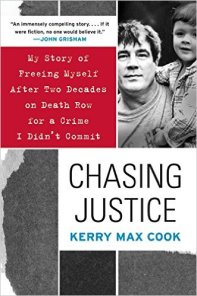 My journey to Chasing Justice has been a long one, so I’ll do my best to paraphrase. Back in November 2014, my boyfriend told me about this little podcast you might have heard of called Serial (detect a bit of sarcasm there? It was huge.). I really enjoy true crime shows (ones where they use forensics and evidence to solve mysteries), so he thought this was right up my alley. In case you don’t know, Serial is a podcast hosted by Sarah Koenig and dives into a case that happened back in 1999 where a seventeen year old high schooler, Adnan Syed, was accused of murdering his ex-girlfriend, Hae Min Lee. There are a lot of twists, turns, and important minute details in the case, which I found fascinating. If it was a book, I’d mark it as a page turner for sure.
My journey to Chasing Justice has been a long one, so I’ll do my best to paraphrase. Back in November 2014, my boyfriend told me about this little podcast you might have heard of called Serial (detect a bit of sarcasm there? It was huge.). I really enjoy true crime shows (ones where they use forensics and evidence to solve mysteries), so he thought this was right up my alley. In case you don’t know, Serial is a podcast hosted by Sarah Koenig and dives into a case that happened back in 1999 where a seventeen year old high schooler, Adnan Syed, was accused of murdering his ex-girlfriend, Hae Min Lee. There are a lot of twists, turns, and important minute details in the case, which I found fascinating. If it was a book, I’d mark it as a page turner for sure.
Serial ends with Sarah Koenig not really coming to a final conclusion on the subject of Adnan’s guilt or innocence, and I think it also left a lot of the audience thinking the same. I was really curious to learn more because there were a lot of questions left unanswered in the podcast. Since the Serial podcast came out, there have been quite a number of spin-off podcasts discussing the case. One of those podcasts is Undisclosed. If you’re interested in really getting into the nitty gritty details of the Serial case from a lawyer’s perspective, I’d recommend listening to the Undisclosed podcast if you haven’t already. It is quite skewed in one direction, since it takes the stand that Adnan is innocent and is out to prove that, but they do a really amazing job at getting into the details of the case that Adnan’s lawyer should have done the first time around. Personally, I lean toward his innocence, especially after listening to Undisclosed.
From the Undisclosed podcast, I heard about yet another podcast, Serial Dynasty (it is now called Truth & Justice with Bob Ruff). What I think makes Bob’s podcast special is that he approached it with an open mind to start…”Is Adnan innocent, is he guilty? I don’t know, let’s find out!” He was also able to get an interview with one of the very elusive and small, but important, players in the overall story, “Neighbor Boy” (that’s what they were calling him in all the podcasts to keep him anonymous since he did not testify at trial). I thought that it was pretty amazing to hear this guy’s side of the story all these years later. He didn’t even know everyone had been talking about him in the podcasts and how potentially important his story was to the case.
Bob’s podcast started out more fan-focused, the point being to discuss theories about the Serial case. However, it soon turned into a full on investigation where Bob came to the conclusion that Adnan was innocent. Some of the sleuthing he did was amazing – specifically regarding Hae Min Lee’s most recent boyfriend’s time sheets for his alibi. Eventually, Bob came to the end of his investigation that he could share on air, so his podcast changed again. This time into Truth and Justice, where he is currently investigating another apparent wrongful conviction case. It takes place in the same area as Chasing Justice – Tyler, Texas. Bob has mentioned this book and case a bunch of times in his podcast, and it seemed really interesting to me, so I asked my boyfriend to get it for me for my birthday. It might be hard to find in a library, but you can easily get it via Amazon.
To provide a little background, Kerry Max Cook was convicted of capital murder for the rape and murder of Linda Jo Edwards in 1977. He spent nearly 20 years on death row, but maintained his innocence the entire time. His case is really unlike any other in our legal system’s history; the alleged prosecutorial misconduct that occurred was abhorrent – witnesses who were lying in their testimony, DNA that was left untested, and more. Chasing Justice is written in the first person by Kerry Max Cook and chronicles his life before, during, and after prison. While being in prison is hard for anyone, Cook seems to have had an extremely hard go of it. He was raped, abused, and depressed for almost all of his time behind bars. Very sad for someone who shouldn’t have been there in the first place.
I usually try to keep an open mind with things like this, especially because this was written directly by Cook who is writing not only to tell his story, but to maintain his innocence. So I try to take that with a grain of salt. But, after hearing more information outside of the book regarding the case, I do believe he was railroaded into a conviction. While we all must understand that putting an innocent person in prison is completely against what our justice system stands for, we also must realize that having an innocent person in jail means that the real perpetrator is still running free. Which, in my mind, is equally as disturbing. Jail is supposed to keep those who cause harm in society away from us and when prosecutors and the legal system railroad innocent people through the system just to get a conviction, we all suffer. It’s unacceptable. Chasing Justice is also an example of the complexities of the death penalty. Had Cook not been able to free himself from prison (free is a loose term by the way, he was never completely exonerated), an innocent man would have been killed.
Anyway, back to the book. I was actually pretty surprised at how different this book read than what I was expecting. I was expecting a more factual crime non-fiction book that was straight forward and focused on the facts of the case. However, this book was written very much like a biography or a story. It took me a few chapters to get used to this. There was some legal jargon included, but I felt Cook did a good job explaining it. Although, I did feel at times he did not do a good job explaining some details of the case to clearly lay out why he was innocent. But, then again, it was not necessarily a pure crime book, so I understand why it might not have been muddled down with forensic and legal details. Chasing Justice‘s sole purpose is not to explain why he is innocent, it is more a very detailed account of his experiences in the legal system and in prison. I was also amazed at how much Cook was able to remember and relay back to us. (Although I am always amazed by this in biographies.) Overall I found this book a very interesting, emotional, and though provoking book. I’d recommend it to anyone wondering how an innocent person can spend 20 years on death row, or anyone who knows why and wants to do something about it.
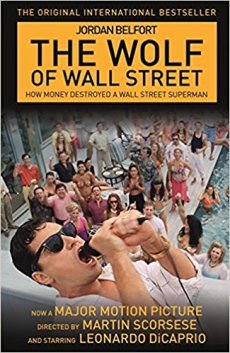 Seeee how quickly I am reading non-fiction books? Blowing through them. Anyway, yes, I’m aware The Wolf of Wall Street is a memoir, but (like I’ve said before) I don’t really count memoirs as non-fiction because they’re usually pretty interesting. Some biographies also can be included!
Seeee how quickly I am reading non-fiction books? Blowing through them. Anyway, yes, I’m aware The Wolf of Wall Street is a memoir, but (like I’ve said before) I don’t really count memoirs as non-fiction because they’re usually pretty interesting. Some biographies also can be included!


 Posted by LaurOfAllTrades
Posted by LaurOfAllTrades 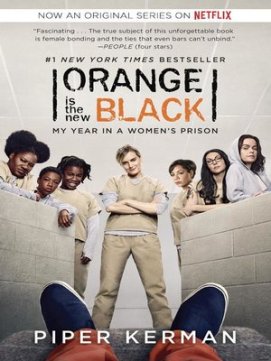 Unless you live under a rock, I’m sure you’ve heard of Orange is the New Black. The Netflix original series made a splash in the TV and Netflix world a few years ago and just released its fifth season in June. I’ve been watching for the past few years and it’s one of my favorite shows! Many of those who watch the show are aware that it was actually a memoir before becoming an insanely popular TV show.
Unless you live under a rock, I’m sure you’ve heard of Orange is the New Black. The Netflix original series made a splash in the TV and Netflix world a few years ago and just released its fifth season in June. I’ve been watching for the past few years and it’s one of my favorite shows! Many of those who watch the show are aware that it was actually a memoir before becoming an insanely popular TV show. My journey to Chasing Justice has been a long one, so I’ll do my best to paraphrase. Back in November 2014, my boyfriend told me about this little podcast you might have heard of called Serial (detect a bit of sarcasm there? It was huge.). I really enjoy true crime shows (ones where they use forensics and evidence to solve mysteries), so he thought this was right up my alley. In case you don’t know, Serial is a podcast hosted by Sarah Koenig and dives into a case that happened back in 1999 where a seventeen year old high schooler, Adnan Syed, was accused of murdering his ex-girlfriend, Hae Min Lee. There are a lot of twists, turns, and important minute details in the case, which I found fascinating. If it was a book, I’d mark it as a page turner for sure.
My journey to Chasing Justice has been a long one, so I’ll do my best to paraphrase. Back in November 2014, my boyfriend told me about this little podcast you might have heard of called Serial (detect a bit of sarcasm there? It was huge.). I really enjoy true crime shows (ones where they use forensics and evidence to solve mysteries), so he thought this was right up my alley. In case you don’t know, Serial is a podcast hosted by Sarah Koenig and dives into a case that happened back in 1999 where a seventeen year old high schooler, Adnan Syed, was accused of murdering his ex-girlfriend, Hae Min Lee. There are a lot of twists, turns, and important minute details in the case, which I found fascinating. If it was a book, I’d mark it as a page turner for sure.

_-_200px.jpeg)
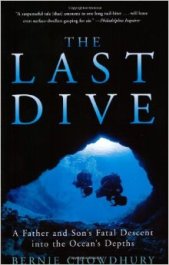
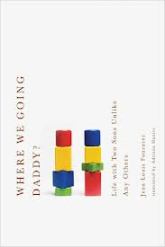
 If I Die in a Combat Zone, Box Me Up and Ship Me Home by Tom O’Brian is heartbreaking. That’s the simplest way to phrase it. The chilling name essentially says it all. My boyfriend lent me this book, citing it as an easy read. Easy read technically? Yes. Easy read emotionally? No. If I Die in a Combat Zone is about Tom O’Brian’s experience in the Vietnam War. You may recognize his name from the book The Things They Carried, which I did not realize he wrote until I noticed it on the back cover. I haven’t read that book yet, but I plan to after reading If I Die in a Combat Zone. It’s definitely the more well-known book, and I would assume has a slightly different focus than If I Die in a Combat Zone.
If I Die in a Combat Zone, Box Me Up and Ship Me Home by Tom O’Brian is heartbreaking. That’s the simplest way to phrase it. The chilling name essentially says it all. My boyfriend lent me this book, citing it as an easy read. Easy read technically? Yes. Easy read emotionally? No. If I Die in a Combat Zone is about Tom O’Brian’s experience in the Vietnam War. You may recognize his name from the book The Things They Carried, which I did not realize he wrote until I noticed it on the back cover. I haven’t read that book yet, but I plan to after reading If I Die in a Combat Zone. It’s definitely the more well-known book, and I would assume has a slightly different focus than If I Die in a Combat Zone.



